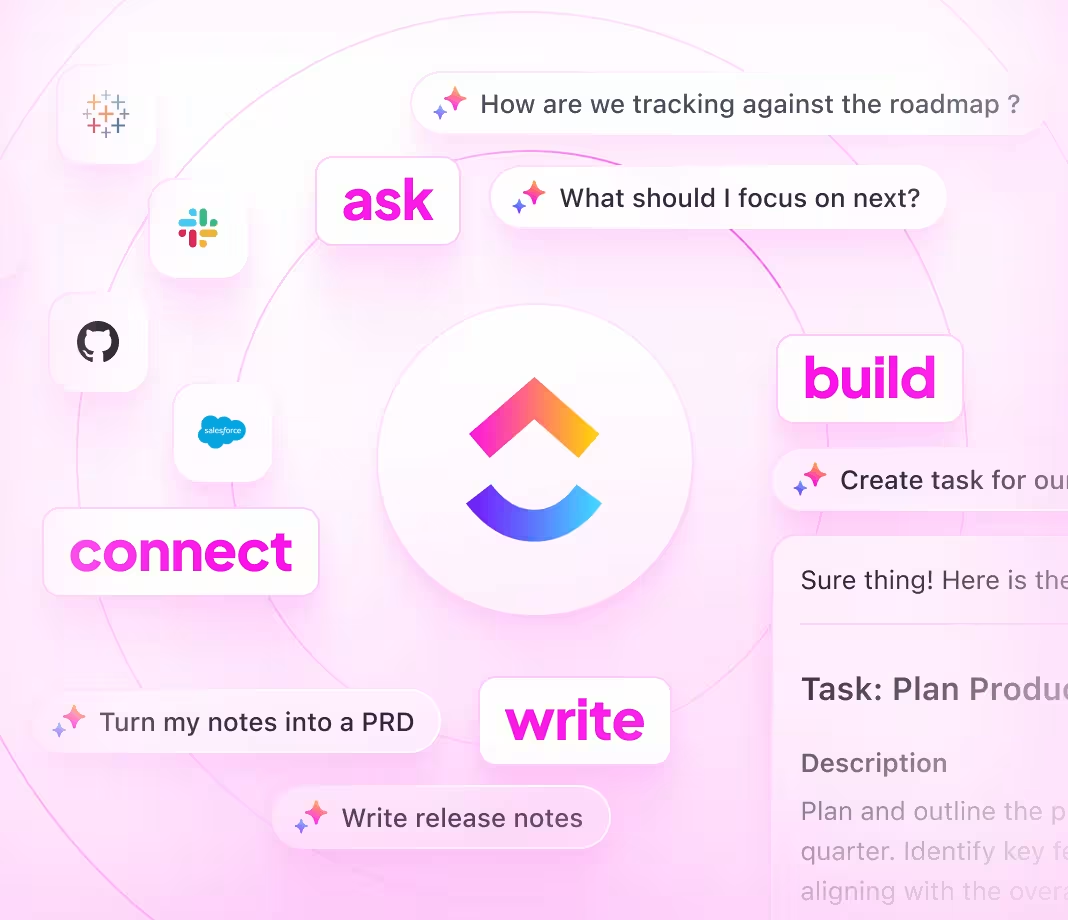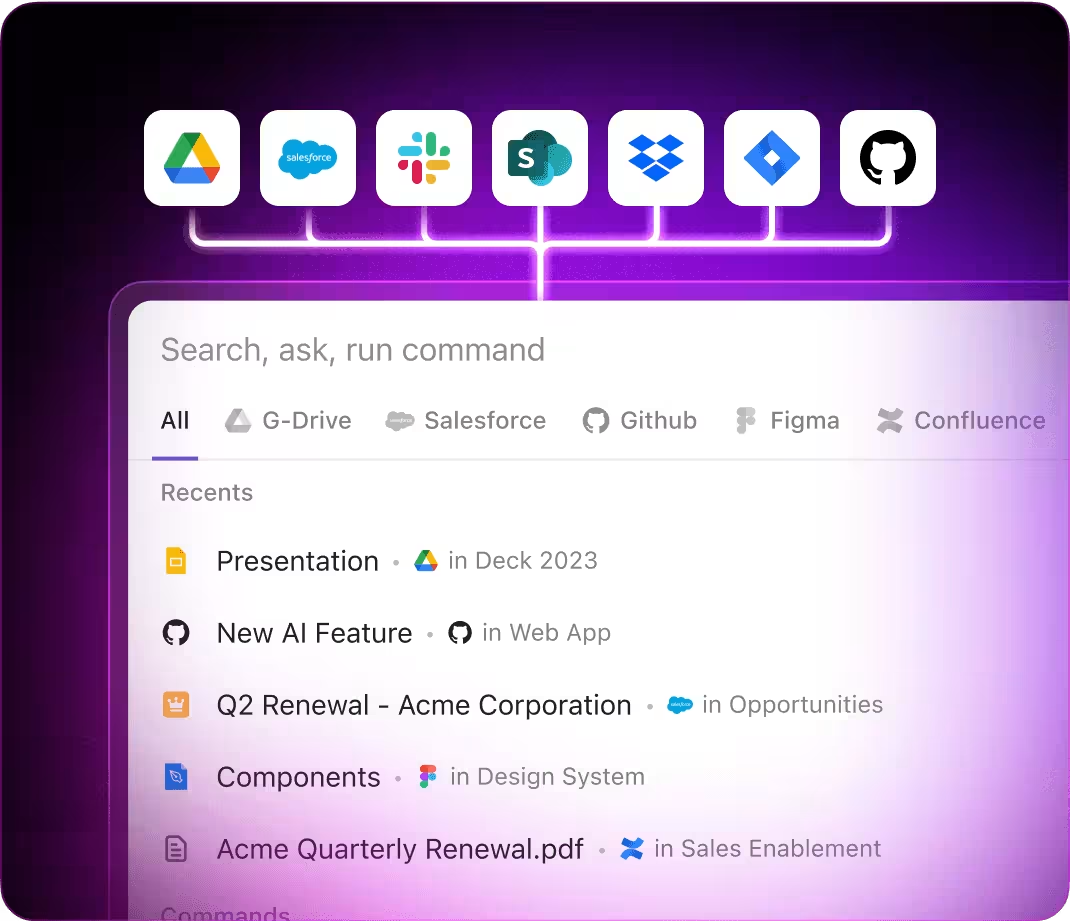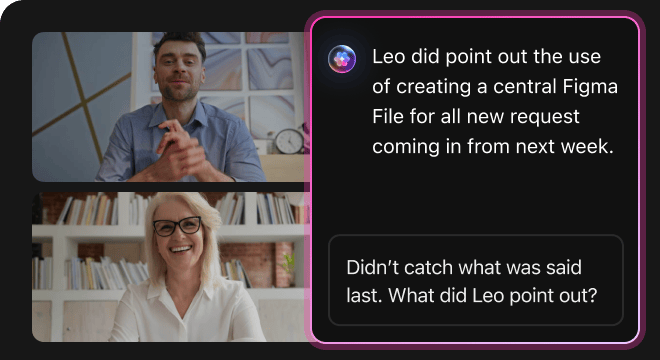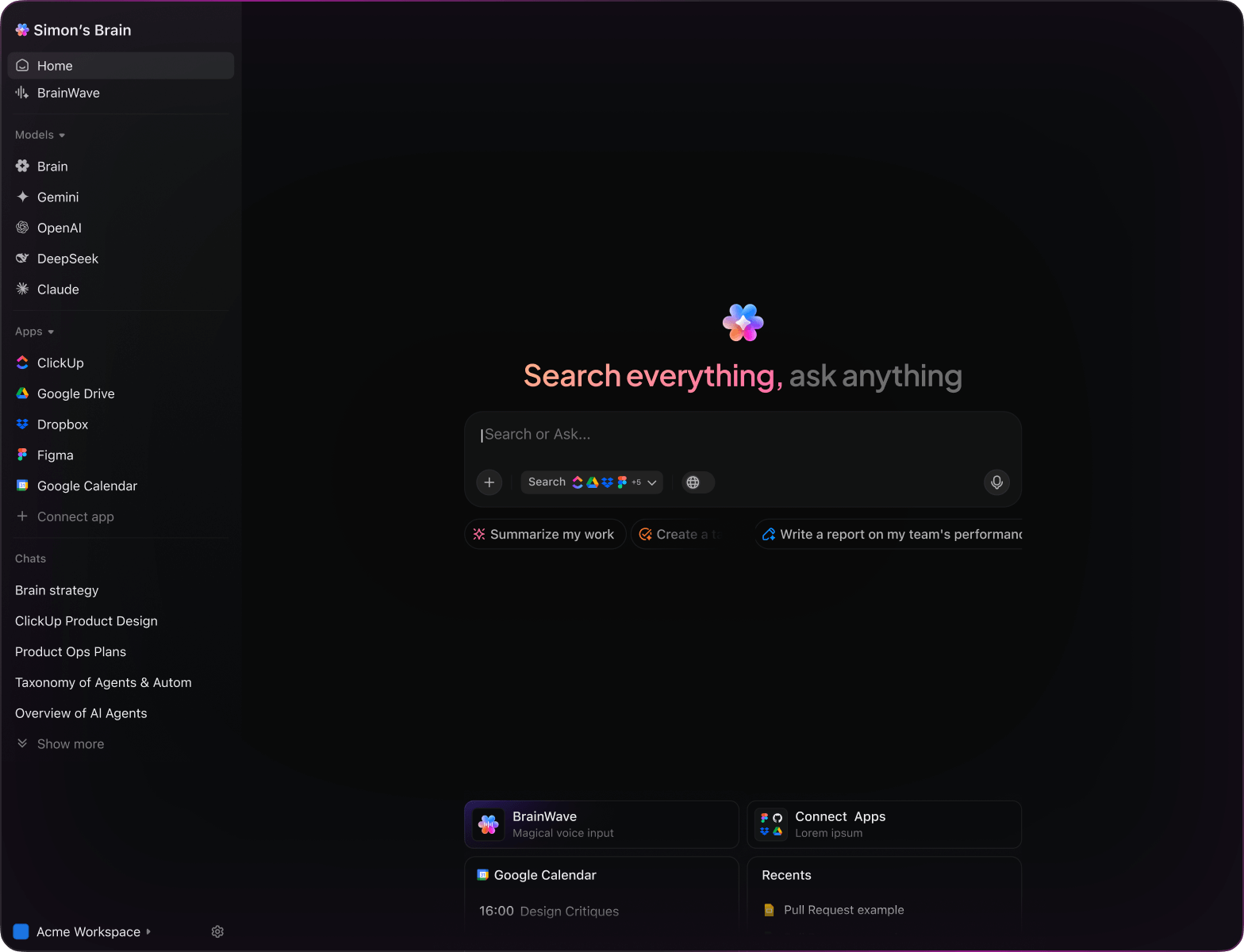AI Solutions for Waste Reduction
Top AI Prompts to Cut Waste with ClickUp Brain
Reduce waste efficiently, optimize your processes, and empower your team to make sustainable choices using ClickUp Brain.

Trusted by the world’s leading businesses
AI for Waste Reduction
Harness AI Prompts to Cut Waste in Your Workflow
Reducing waste isn't just about recycling—it's about rethinking how your team operates every day.
From tracking materials to optimizing processes and managing compliance, waste reduction requires juggling many details—and countless documents, reports, and action items. AI prompts are changing the game.
Teams rely on AI to:
- Quickly identify waste hotspots and inefficiencies
- Generate actionable plans and checklists from raw data
- Clarify complex environmental regulations and standards
- Transform scattered notes into clear tasks and workflows
Embedded in familiar tools like docs, whiteboards, and task boards, AI in ClickUp Brain moves beyond simple assistance. It actively shapes your inputs into structured, impactful actions that drive waste reduction forward.
ClickUp Brain vs Conventional Solutions
Why ClickUp Brain Stands Apart
ClickUp Brain integrates seamlessly, understands your context, and acts swiftly—letting you focus on cutting waste, not explaining it.
Conventional AI Platforms
- Constantly toggling between apps to collect info
- Repeating your waste reduction objectives in every query
- Receiving generic, irrelevant feedback
- Hunting through multiple tools for a single document
- Interacting with AI that only processes input
- Manually switching among different AI engines
- Merely a browser add-on without deep integration
ClickUp Brain
- Deeply connected to your tasks, documents, and team communications
- Retains your project history and sustainability goals
- Provides insightful, context-driven guidance
- Offers a consolidated search across all your resources
- Supports voice commands through Talk to Text
- Automatically selects the optimal AI model: GPT, Claude, Gemini
- Dedicated Mac & Windows apps designed for performance
Waste Reduction AI Prompts
15 Targeted AI Prompts for Waste Reduction Teams
Enhance waste management—insights, strategies, and compliance simplified with ClickUp Brain.

Identify 5 innovative exterior packaging designs that reduce material use, based on the ‘Spring 2025 Sustainability Report’.
ClickUp Brain Behaviour: Analyzes linked documents to extract eco-friendly design concepts focused on material efficiency.

What are the leading interior design elements aimed at minimizing waste in sub-$25K consumer products in North America?
ClickUp Brain Behavior: Gathers insights from internal research files; Brain Max can supplement with public sustainability data if accessible.

Draft a design brief for minimalist packaging inspired by zero-waste principles. Reference Sketch File #8 and previous sustainability notes.
ClickUp Brain Behavior: Pulls relevant annotations and text from linked files to compose a clear, actionable brief.

Summarize material efficiency benchmarks between Tesla Model Y and VW ID.4 from the ‘Material Use Q2’ report.
ClickUp Brain Behavior: Extracts and compares data tables and narratives from internal documents to highlight material savings.

List leading thermal management materials that contribute to waste reduction in high-performance EVs, referencing R&D and supplier specs.
ClickUp Brain Behavior: Reviews internal documents to identify frequently used eco-conscious materials and their benefits.

From the ‘Steering System Validation’ document, generate a checklist focused on testing components for recyclability and waste reduction.
ClickUp Brain Behavior: Extracts relevant test criteria and formats them into a structured checklist within a task or document.

Summarize 3 emerging gesture control trends in infotainment UX that promote waste reduction, based on post-2024 research.
ClickUp Brain Behavior: Identifies patterns and recurring themes from linked studies and notes.

From the ‘Gen Z UX Survey Q1’ document, summarize key preferences for in-car app interfaces emphasizing waste reduction.
ClickUp Brain Behavior: Analyzes survey data to highlight common design themes and user feedback.

Write concise and engaging UX copy for the eco-mode toggle screen, guided by the tone in ‘ProductTone.pdf.’
ClickUp Brain Behavior: Extracts style cues from the document and proposes varied interface text options.

Summarize major updates in EU 2025 waste reduction regulations and their implications for fascia design.
ClickUp Brain Behavior: Reviews linked compliance documents and synthesizes key points; Brain Max can add public updates if available.

Generate placement and sizing guidelines for EV charging indicators that minimize waste, referencing India-specific compliance documents.
ClickUp Brain Behavior: Extracts relevant measurements and positioning rules from internal files to create a compliance checklist.

Create a checklist for frontal crash tests focusing on waste reduction, using US NCAP 2025 PDFs and chassis design documents.
ClickUp Brain Behavior: Identifies requirements from PDFs and organizes tasks by test area and impact severity.

Compare use of recycled and sustainable materials in interiors across Tesla, Lucid, and Rivian using competitive analysis documents.
ClickUp Brain Behavior: Summarizes comparative data into a clear, concise format such as tables or briefs.

Identify emerging interior design trends focused on waste reduction in autonomous vehicles since 2023.
ClickUp Brain Behavior: Synthesizes insights from research notes, concept summaries, and uploaded reports.

Summarize key cabin usability and waste reduction challenges from Southeast Asia EV feedback, covering materials, layout, and interactions.
ClickUp Brain Behavior: Extracts and prioritizes user-reported issues from surveys, feedback notes, and tagged tickets.
Cut Waste Smarter with ClickUp Brain
Stop repeating mistakes, unify your team’s efforts, and produce impactful waste reduction strategies powered by AI-driven workflows.






AI Prompts for Waste Reduction with ClickUp Brain
Discover How ClickUp Brain Transforms Waste Management Strategies
Prompts for ChatGPT
- Outline a 5-step plan to minimize waste in manufacturing processes focusing on material reuse.
- Compose persuasive content for a campaign promoting zero-waste office practices.
- Propose 3 innovative packaging designs that reduce plastic use and improve recyclability.
- Develop a detailed workflow for implementing a company-wide composting program.
- Analyze recent waste audit reports and summarize key areas for reduction initiatives.
Prompts for Gemini
- Create 3 alternative layouts for a waste sorting station optimized for user convenience.
- Suggest creative ideas for upcycling office waste into functional products.
- Describe a visual concept for an educational poster on reducing food waste in cafeterias.
- Recommend ergonomic designs for reusable container storage to encourage employee participation.
- Build a comparative chart of waste reduction technologies focusing on cost-effectiveness and impact.
Prompts for Perplexity
- Identify 5 sustainable materials for packaging and evaluate their environmental benefits.
- Compare composting methods suitable for urban offices, highlighting efficiency and space requirements.
- Summarize global policies on waste reduction and their effectiveness in corporate settings.
- List 5 practical solutions for minimizing electronic waste and rank them by ease of implementation.
- Review past waste management campaigns and extract 3 best practices for future efforts.
Prompts for ClickUp Brain
- Transform this waste audit feedback into clear action items with assigned team members and deadlines.
- Condense meeting notes on recycling initiatives and create follow-up tasks with priorities.
- Evaluate annotated waste flow diagrams and generate a checklist for process improvements.
- Develop a task list from cross-department discussions on reducing single-use plastics, including urgency levels.
- Summarize interviews with staff on waste habits and produce actionable tasks for awareness campaigns in ClickUp.
How ClickUp Supports Waste Reduction
Transform Initial Thoughts into Actionable Plans
- Convert scattered observations into detailed waste audit reports quickly.
- Generate innovative solutions by analyzing previous reduction efforts.
- Build standardized templates that accelerate sustainability projects.
Brain Max Boost: Effortlessly access past waste data, team feedback, and project documents to fuel your next improvement initiative.

How ClickUp Supports Waste Reduction
Accelerate Waste Minimization Processes
- Break down waste management challenges into manageable tasks.
- Transform audit findings into actionable assignments.
- Automatically create summaries and progress reports without extra effort.
Brain Max Boost: Instantly access historical waste data, material usage comparisons, or reduction strategies across initiatives.

AI Advantages
How AI Prompts Enhance Every Phase of Waste Reduction
AI prompts accelerate solutions and inspire smarter, more effective waste management strategies.
Instantly Craft Effective Waste Solutions
Teams explore innovative waste reduction ideas quickly, make informed choices, and prevent decision delays.
Enhance Decision-Making with Data
Drive better outcomes, minimize environmental impact, and meet compliance with confidence.
Identify Issues Early to Save Resources
Avoid expensive corrections later, boost process quality, and accelerate project completion.
Align Teams for Unified Waste Goals
Improves communication, removes confusion, and speeds up consensus among operations, sustainability, and management.
Innovate Beyond Traditional Limits
Ignite creative approaches, develop cutting-edge waste strategies, and maintain leadership in sustainability.
Integrated AI Workflows Within ClickUp
Transforms AI insights into actionable steps that propel your waste reduction projects forward.
Cut Waste Faster with ClickUp Brain
Minimize mistakes, simplify transitions, and generate efficient solutions using AI-powered support.





